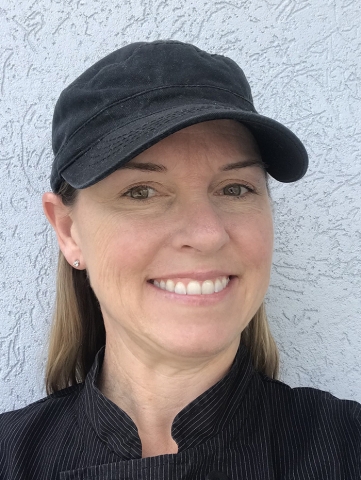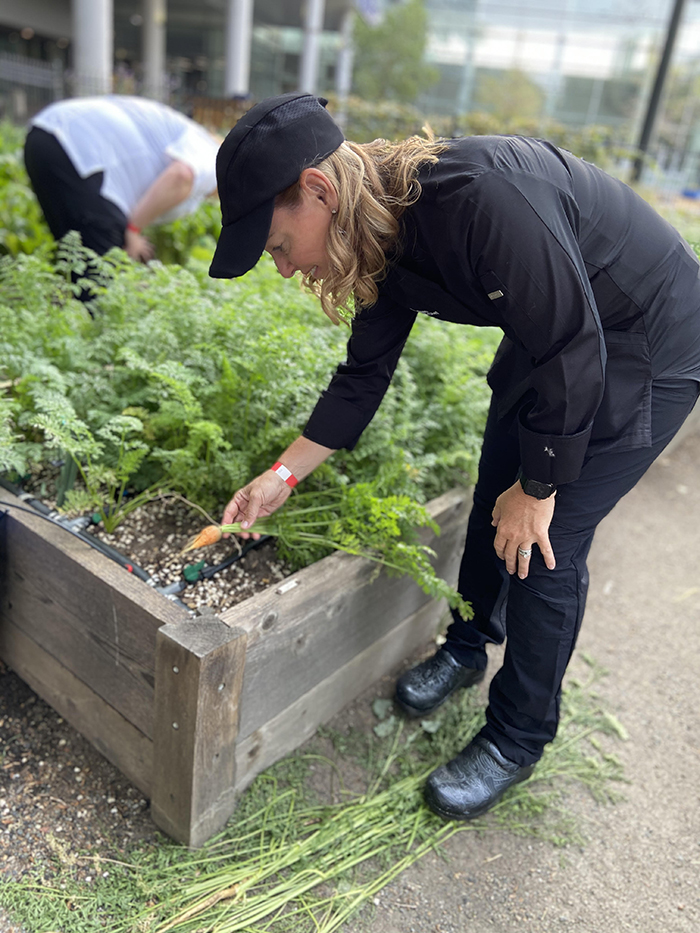Taste Trends: Serving Up the Latest in Event F&B with Jen Bargisen, Senior Executive Chef, Sodexo Live!

Now that meetings and conventions are trickling back to an in-person format again, the question of what event food and beverage is going to look like for the foreseeable future is likely occupying the mind of many a pandemic-weary event planner these days. To find out how the last 20 months have influenced the kinds of menus events are opting to serve or forgo, we turned to the experts—in this case, 20-year culinary veteran Jen Bargisen, senior executive chef with Sodexo Live!—to find out which F&B trends are hot and which are not in this ever-evolving health and safety landscape.
What are the biggest and most exciting food and beverage trends that you’re seeing at the convention centers you oversee?
Convention centers and conference centers are the best way to experience something live. While that often means the event itself, it also includes the taste, feel and emotion of the food during the event. I think that some of the best trends I am seeing are authentic local foods and regional culinary experiences that are brought to life with action stations during shows. Making a guest feel as though they are truly immersed in the specific location or inspiration for the event is trending more than ever. People want that authentic experience of watching their food being freshly made and understanding every part of what they are eating. They want to watch their tortilla being hand-pressed versus just being handed a taco, for example.
What are some pre-COVID trends that are no longer hot and why?
A lot of people enthusiastically embraced cooking more intimately during COVID and are much more in tune with ingredients, preparations and flavors. So I think as a whole, people are tired of getting everything individually packaged, generally. Most people are energized by embracing and participating in their food, whether in customizing their experience or engaging in the preparation. People want to know how it’s made and how they can uniquely enjoy it. Live interaction and deeper dives into ingredient origins, locations or regions are where it’s at!

Many event planners are going to be working with even tighter budgets when events fully resume. What are your top tips for overcoming this obstacle while still providing delicious fare?
Don’t feel compelled to give everyone the “expected” all of the time. By staying on trend with the idea of exploring culinary deeper dives into ingredients and regions, menus can be leaner but more meaningful. As an example, instead of providing lots of variety through the volume of menu items, a menu can be very robust as a tasting of local fruits and regional artisan baked goods reminiscent of a regional farmers market versus every item normally expected anywhere for breakfast.
Prior to COVID, dietary-conscious menus (such as gluten-free, keto, vegan and vegetarian) were a big and growing trend. Is this still true and if so, do you foresee this accelerating in the future?
I think the need to provide a highly customized experience in every food service format is here to stay. The most successful solutions and the increasing trends have been to embrace all needs through most menus so that everyone can enjoy these trends such as plant-forward or keto-friendly menus and entrees through which everyone enjoys innovative selections. This trend will only grow because people and chefs are excited to try new and different foods and flavors.
Why did you decide to forge a career path in the culinary arts?
I became a chef because I love creating and have always enjoyed being a part of the emotional feel of food. Technically, I love the art of perfecting a dish or highlighting an ingredient to its fullest. There is not a day that goes by in culinary that you don’t learn something or are inspired by the amazing talent around you. Food is a part of every single person’s memory of a day, moment or event in their life. I specifically went into live event-based culinary because I wanted to be a part of those moments for people. I feel honored to be a part of those experiences to this day.
What are some of the challenges of being a female chef in a male-dominated profession, and are you seeing more women moving into leadership roles like yourself?
There used to be many challenges with respect to gender roles in kitchens. I truly believe that one of the biggest challenges of being a female chef at this point is not seeing yourself as a chef first. While there are certainly different leadership styles and dynamics, I have found there to be much more respect and understanding over everyone’s differences, whether it be gender or other areas of diversity. I have seen much more common ground in genders in the last five years.
As an example, I often speak with my male colleagues regarding parenting now, and we all have common challenges and successes leading kitchens and homes. Decades ago, work and home life were not allowed to be discussed in kitchens for either gender. The presence of diverse leadership is felt everywhere, including culinary, and it is making the workplace more vibrant and ultimately the food more interesting and diverse as well. In culinary, we are all striving to be the best chefs. The differences that we bring to that pursuit make our vision unique, which is celebrated at this point versus being a challenge.
Don’t miss any event-related news: Sign up for our weekly e-newsletter HERE and engage with us on Twitter, Facebook, LinkedIn and Instagram!


Add new comment